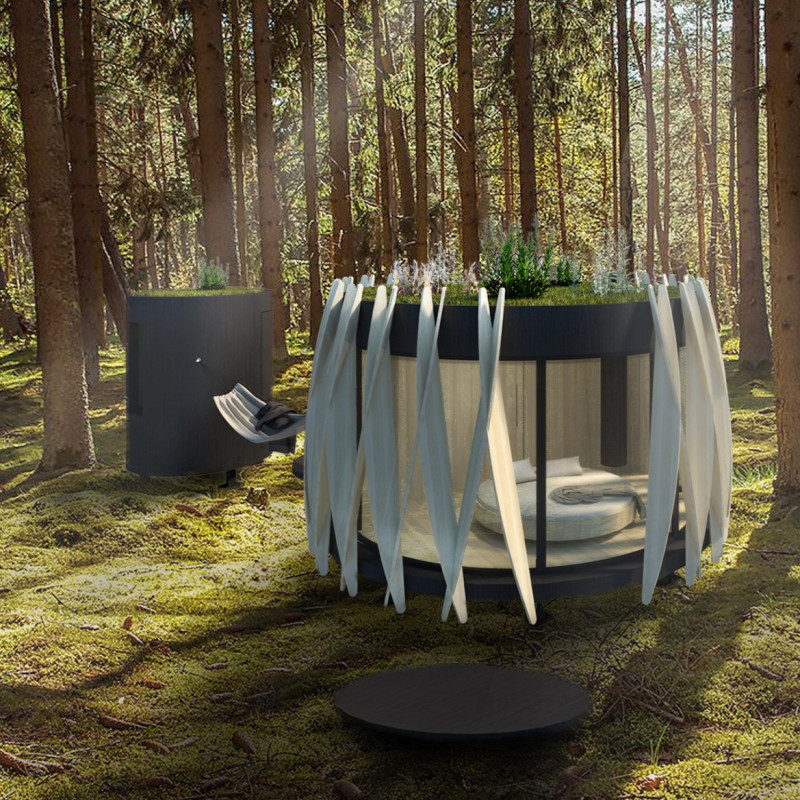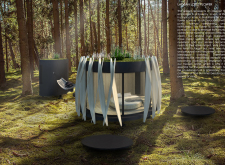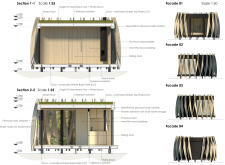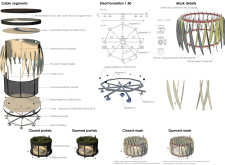5 key facts about this project
The Latvian Lotus Flower project is a meditation cabin designed for contemplation and peace, located in a quiet natural setting. Drawing inspiration from the lotus flower—a symbol of purity and inner peace in Buddhism—the design seeks to create a space that encourages individuals to reflect and connect with nature. The cabin's cylindrical shape allows for an open and inviting environment that facilitates mindfulness and serenity.
Design Philosophy
The design follows principles of feng shui, avoiding right angles to enhance the flow of energy within the space. It consists of two compartments that address both practical needs and personal reflection. The first compartment houses a small kitchenette, water storage, a round table, and a chair. This setup fosters a warm atmosphere suitable for gatherings or solitary moments.
The second compartment features wide glass portals, which provide a direct connection between the interior and the outdoors. Natural light fills the space, offering views of the surrounding landscape. A round bed on wheels adds flexibility and can be adjusted based on individual meditation practices.
Functional Components
Adjacent to the main cabin is another cylindrical structure, which serves as a dry toilet and water storage. This additional unit enhances functionality while maintaining visual harmony with the cabin. The elevated floor design helps prevent mud in winter months, utilizing portable platforms made from plywood and steel for easy access.
A key feature of the design is the "mask," composed of interlocking plywood planks mounted on a steel rail. This element provides privacy and shade while also allowing users to adjust the ambiance of the space. The green roof supports local plants, contributing to the ecological health of the area by integrating parts of the disturbed landscape back into nature.
Material Considerations
Materials such as plywood, steel, and cross-laminated timber were selected for their practicality and environmental compatibility. These choices support the overall functionality of the cabin while also aligning with the project's philosophical foundation.
To create a warm and inviting atmosphere, a cylindrical fireplace is incorporated into the design. Additionally, petroleum lamps illuminate the interior, providing soft lighting that enhances the meditative experience.
The final design detail allows the mask and surroundings to interact, creating a relationship between architecture and nature. As light changes throughout the day, the cabin responds, offering a space that adapts with the seasons and fosters a continuous connection with the environment.






















































